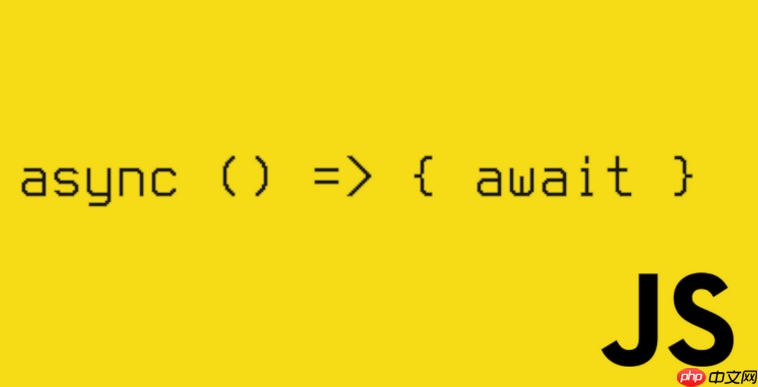javascript中无法直接“获取”原型链上的代理方法,因为proxy的本质是拦截对象操作而非存储方法;2. 要实现对原型链上方法的拦截,必须使用proxy的get陷阱,在属性访问时判断是否为函数,并返回包装后的代理函数;3. 核心实现依赖reflect.get和reflect.apply,确保正确沿原型链查找属性并保持this上下文指向代理实例;4. 实际应用包括响应式系统、orm、日志监控、权限控制、缓存优化等,可在不修改原对象的前提下增强行为;5. 常见陷阱包括this绑定错误、性能开销、调试困难和递归死循环,最佳实践是始终用reflect方法转发操作、限制代理范围、避免全局污染,并在必要时添加调试日志以追踪执行流程。

JavaScript中,你通常不会直接“获取”原型链上的“代理方法”,因为代理(Proxy)本身就是对对象操作的拦截层。更准确地说,当你通过一个代理对象访问其属性或方法时,即使这些属性或方法最终定义在原型链上,代理的陷阱(traps)也会首先被触发,从而让你有机会在实际访问发生前进行干预或修改行为。你不是在“获取”一个代理方法,而是在代理层面上“拦截”并处理对原型链上方法的访问。

要实现对原型链上方法的拦截,核心在于使用
Proxy
get
get
以下是一个具体的实现示例:

// 定义一个基础类,包含一个原型方法
class MyBaseClass {
constructor(id) {
this.id = id;
}
// 这是一个原型方法
logMessage(message) {
console.log(`[Instance ${this.id}] Original message: ${message}`);
return `Processed: ${message}`;
}
// 另一个原型方法
getData() {
return { value: Math.random() * 100 };
}
}
// 定义代理处理器
const proxyHandler = {
/**
* get 陷阱用于拦截属性读取操作
* @param {object} target - 被代理的目标对象
* @param {string|symbol} prop - 被访问的属性名
* @param {object} receiver - Proxy 或继承 Proxy 的对象,通常就是代理实例本身
*/
get(target, prop, receiver) {
console.log(`\n--- Proxy Intercept: Accessing '${String(prop)}' ---`);
// 使用 Reflect.get 来获取属性的原始值,这确保了正确的 'this' 绑定和原型链查找
// 关键点:Reflect.get 会沿着原型链查找,直到找到属性
const value = Reflect.get(target, prop, receiver);
// 如果获取到的是一个函数(并且不是构造函数本身,避免不必要的包装)
if (typeof value === 'function' && prop !== 'constructor') {
console.log(` -> Detected a method: '${String(prop)}'. Wrapping it.`);
// 返回一个新的函数,这个函数将是我们“代理”后的方法
return function(...args) {
console.log(` -> [Before Call] Method '${String(prop)}' is about to be invoked with args:`, args);
// 使用 Reflect.apply 来调用原始方法,确保 'this' 上下文是正确的(即代理实例)
const result = Reflect.apply(value, receiver, args);
console.log(` -> [After Call] Method '${String(prop)}' finished. Result:`, result);
return result; // 返回原始方法的执行结果
};
}
// 如果不是函数,直接返回原始值
console.log(` -> It's a property or non-callable: '${String(prop)}'. Value:`, value);
return value;
},
// 也可以添加其他陷阱,例如 set 拦截属性设置
set(target, prop, value, receiver) {
console.log(`--- Proxy Intercept: Setting '${String(prop)}' to '${value}' ---`);
return Reflect.set(target, prop, value, receiver);
}
};
// 创建一个 MyBaseClass 的实例
const myInstance = new MyBaseClass('A1');
// 使用 Proxy 包装这个实例
const proxiedInstance = new Proxy(myInstance, proxyHandler);
console.log("--- Testing proxiedInstance.logMessage ---");
// 调用原型链上的方法,这将触发 get 陷阱
proxiedInstance.logMessage("Hello from proxied instance!");
console.log("\n--- Testing proxiedInstance.getData ---");
const data = proxiedInstance.getData();
console.log("Received data:", data);
console.log("\n--- Testing direct property access ---");
// 访问实例自身的属性
console.log("Instance ID:", proxiedInstance.id);
console.log("\n--- Testing property modification ---");
proxiedInstance.id = 'B2';
console.log("New Instance ID:", proxiedInstance.id);这段代码的核心思想是:当通过
proxiedInstance.logMessage
logMessage
get
logMessage
logMessage
Reflect.get
Reflect.apply
this
理解
Proxy
Proxy
Proxy
Proxy

这种“前置拦截”的模型带来了极大的灵活性,但也可能导致一些困惑:
Proxy
get
set
Reflect.get
Reflect.set
this
this
this
Reflect.apply(value, receiver, args)
receiver
this
this
Proxy
Proxy
正确理解这种交互模型,能让你在设计复杂的系统时,更好地利用
Proxy
原型链上的方法拦截在现代JavaScript开发中有着广泛而强大的应用场景,它允许我们在不修改原始类或对象的情况下,对其行为进行增强或修改,这在很多框架和库的设计中都有体现:
Proxy
Proxy
save()
find()
Proxy
Proxy
Proxy
Proxy
undefined
这些场景都体现了
Proxy
虽然
Proxy
this
get
value
this
target
receiver
this
Reflect.apply(value, receiver, args)
receiver
this
性能开销:
Proxy
Proxy
调试复杂性:如前所述,
Proxy
Proxy
console.log
Proxy
循环引用或递归陷阱:在
get
set
get
prop
Reflect.get
Reflect
Reflect.get
Reflect.set
Reflect.apply
Proxy
不恰当的全局修改:有些人可能会尝试通过代理
Object.prototype
Proxy
Object.prototype
hasOwnProperty
Proxy
Object.prototype.hasOwnProperty
Reflect.get
Reflect.apply
prop
总之,
Proxy
Reflect
this
Proxy
以上就是js如何获取原型链上的代理方法的详细内容,更多请关注php中文网其它相关文章!

每个人都需要一台速度更快、更稳定的 PC。随着时间的推移,垃圾文件、旧注册表数据和不必要的后台进程会占用资源并降低性能。幸运的是,许多工具可以让 Windows 保持平稳运行。

Copyright 2014-2025 https://www.php.cn/ All Rights Reserved | php.cn | 湘ICP备2023035733号